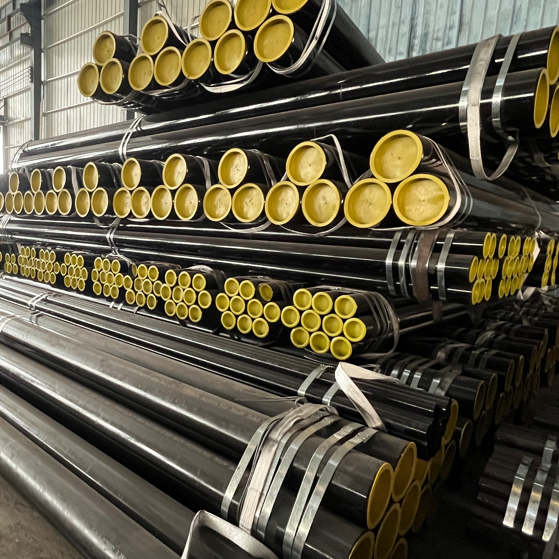ASTM A192 Cold-drawn seamless steel pipe is an important manufacturing process in the steel industry. Behind it lies exquisite technology and a deep understanding of material properties. Through the cold drawing process, the steel pipe not only becomes smoother and more beautiful but also has excellent performance characteristics and is suitable for various engineering fields.
Advantages of ASTM A192 cold-drawn seamless steel pipe:
1. Excellent mechanical properties: The cold drawing process can make the grains of the steel pipe finer and the structure denser, improving the strength and hardness, and making the steel pipe perform better when withstanding pressure and impact.
2. Precise dimensional control: Cold-drawn ASTM A192 steel pipes have high dimensional accuracy and good surface finish, which can meet the engineering needs that require high dimensional accuracy and are conducive to the smooth progress of engineering construction.
3. Excellent corrosion resistance: Because the cold-drawn seamless steel pipe has a smooth surface and less oxide layer, it has good corrosion resistance and is suitable for use in harsh environments.
4. Wide range of applications: Cold-drawn seamless steel pipes are widely used in petroleum, chemical industry, machinery manufacturing, and other fields, such as oil drilling, automobile manufacturing, aerospace, etc., showing their multi-faceted value and importance.
In the manufacturing process of cold-drawn ASTM A192 seamless steel pipes, after the raw materials are heated, the steel billets are continuously drawn into seamless steel pipes of various specifications through the drawing action of the mold. This process makes the internal structure of the steel pipe more dense and uniform, improves strength and wear resistance, and also improves the quality of the internal and external surfaces of the steel pipe, reduces post-processing costs, and has high economic benefits.
ASTM A192 Seamless Low Carbon Steel Pipes in hot rolled and cold drawn delivery conditions. They are usually used in high pressure pressure boilers (working pressure does not exceed 9.8Mpa, working temperature between 450℃-650℃) heating surface pipes, headers, economizers, superheaters, and reheaters.
 Why should Seamless steel pipes be epoxy powder coated?
Why should Seamless steel pipes be epoxy powder coated?
 ASTM A106 Thick-walled steel pipe production steps
ASTM A106 Thick-walled steel pipe production steps
 Shengtian Group successfully participated in the Russian Oil and Gas Exhibition
Shengtian Group successfully participated in the Russian Oil and Gas Exhibition
 Is API 5L Black Steel Pipe Good For Air Lines?
Is API 5L Black Steel Pipe Good For Air Lines?